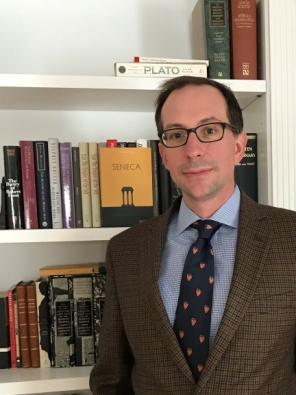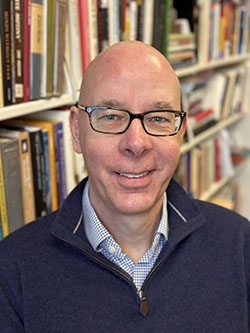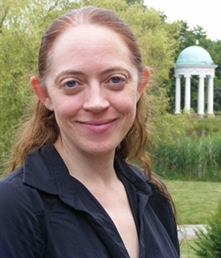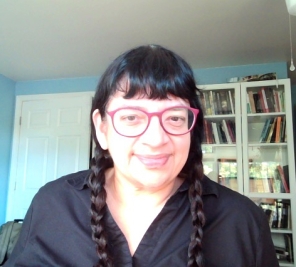Seminar 2020–2021
”Crisis, Catastrophe, and Recovery“ Seminar Participants
Christopher Star
Director of the Axinn Center of the Humanities, Professor of Classics
I am working on two projects as part of the Humanities Research Seminar. During the course of the year, I will complete a book, Golden Age and Apocalypse: The End of the World in Greek and Roman Thought for Johns Hopkins University Press. This book provides the first full-scale study of the various ways in which ancient Greek and Roman authors, from the archaic Greek poet Hesiod, to Plato, Lucretius, Vergil, and Marcus Aurelius, imagined the possible fates that awaited humanity. I am also starting a new project on the history and development of the different meanings of the word “apocalypse,” beginning with ancient Greek texts and continuing to modern media. As director of the seminar, I am enjoying discussing with my colleagues ancient and modern theories about world catastrophe and renewal.
Ian Barrow
A. Barton Hepburn Professor of History
The Independence of India and Pakistan
British rule over India came to an end in August 1947. India was now independent, but it was also partitioned, resulting in the creation of Pakistan. The abrupt division of India forced the largest mass migration in history, with perhaps 10 million refugees crossing the new borders. It is estimated that a million people lost their lives. My project for the Humanities Seminar is to write a proposal for a concise textbook on the history of Indian and Pakistani independence.
My history aims to offer a fresh and clear perspective on the partition. It will analyze the principal conflict between the Muslim League, with its demand for Pakistan, and the Indian National Congress, with its vision for a united India. It will outline the increasingly ineffectual and yet consequential policies and positions adopted by the British. It will also explain the precarious position of the Sikhs and others, including Dalits, who were marginalized or otherwise affected by the decisions leading to independence and the violent partition.
Enrique Garcia
Professor of Luso-Hispanic Studies
Student Activism, BIPOC Resistance, and Superhero Comic Books
When Middlebury College experienced the Charles Murray incident in 2017, the institution reached a low point where the faculty and student bodies were very divided by the events in which protesters were often disparaged as thugs violating free speech ideals. While conducting research, I discovered that Murray’s controversial book tour had already been parodied a few decades earlier in the comic book Supergirl 23 (published in 1998). As I was reading a number of comic books set in bleak moments of American history, I noticed that student activism had been part of the superhero stories since the 1960s. Originally the students were mocked in Robin and Spider-Man stories where “hippies” and POC students were portrayed as unreliable and a threat to the system. According to scholar Roderick A. Ferguson, this type of conservative propaganda began as a ploy of the Nixon administration to discredit the student movements, and continues today in the pages of neoliberal media companies such as The New York Times.
After the 1970s and towards the end of the Vietnam War, readers pressured comic book writers to create more political stories that redefined the representation of student struggles within more complex ideological narratives. In this article, I will discuss how American writers introduced BIPOC superhero characters such as White Tiger, Steel, and La Borinqueña, who supported university protests and provided an alternate point of view to the white characters (Spider-Man, Robin, Supergirl), who in turn supported the university administration and its economic interests. My main goal is to explore how the continuous serialized nature of the superhero genre provides us with a cultural frame to understand the evolution of the corporate demonization of student struggles throughout several crises in American history and to highlight the role of BIPOC characters and artists in parodying and subverting the hegemonic appropriation of philosophical values such as “free speech.”
Rebecca Mitchell
Associate Professor of History
The Sound of the Sacred in an Age of Crisis: Russian Old Believers Between Revolution and Reaction, 1905–1917
My project looks at how Old Believers, a religious community alternately ignored and repressed by the imperial Russian state for over two centuries, sought to redefine their place within a rapidly modernizing society between the 1905 and 1917 revolutions in Russia. With the declaration of religious tolerance in 1905, Old Believers had the possibility to openly express and debate their views for the first time in their history. However, it quickly became clear that their isolated communities scattered across the breadth of the empire lacked a unifying basis. Cultural leaders embraced religious chant (imagined as an ancient heritage that preserved an earlier, more spiritual age) as a possible means both to redefine “genuine” Russianness and to potentially win over a new audience within a society traumatized by war and revolution. This chapter is part of a larger book project on the intersection between aurality, religious beliefs, and conflicting national/ethnic identities within the late Russian empire.
Patricia Saldarriaga
Professor of Luso-Hispanic Studies
I am currently working on my book titled Infected Empires: Decolonizing Zombies in co-authorship with Emy Manini. We contend that the zombie can be read as a decolonizing image of necroactivism that exposes the wounds of historical affects and the contemporary global order and illustrates techniques of resistance. Our book aims at looking into the zombie as a transnational cinematic phenomenon and we hope to present a vision of a global zombie. We submit that these local presentations of zombies, coming as they do from smaller, international film industries, do have a global application, considering the network of interrelated power structures and endless war we experience in globalization. As the zombie has germinated in the Americas and spread to infect the world, each culture that deals with it puts its own spin on the monster in ways that apply globally. During this semester, I am writing a chapter titled “Of Matter, Dust, and Earth: Zombies and the Environment.” The chapter includes a discussion on how zombie films confront possible apocalyptic, catastrophic futures that may mark the end of the Anthropocene era. Because we are currently dealing with the COVID-19 pandemic, a global health crisis, the chapter aims at studying the way the current official outbreak narratives (e.g. the Trump administration’s), as well as biopolitics and securitization, intersect with the treatment of migrants, disabled people, and many other minority groups. Zombies can be conceived as cyphers of coloniality, racism, misogyny, ableism, and alienated labor.
Spring Ulmer
Visiting Assistant Professor of English and American Literatures
In the Time of Elections
Protests in Burundi and the United States against power-hungry leaders seeking reelection—one dead presumably from COVID-19, the other recently infected by the virus and recovered—provide the backdrop for the essay I am writing about mothering my son, whom I adopted from Burundi in 2015. Authors Christina Sharpe, Saidiya Hartman, and Dionne Brand grant me alternatives to Afropessimism, as I attempt to envision a future for my son.







